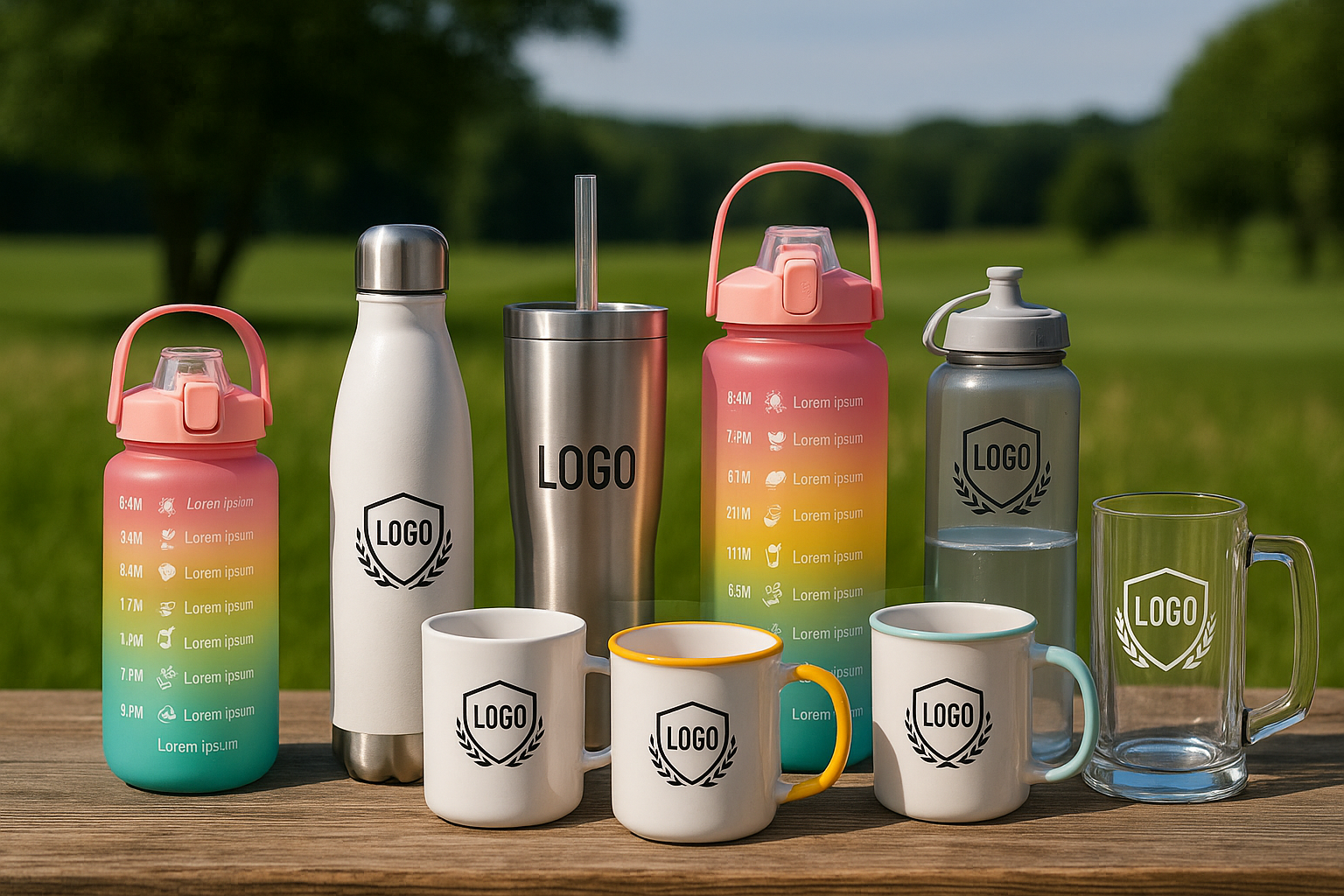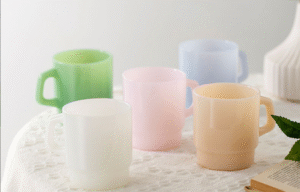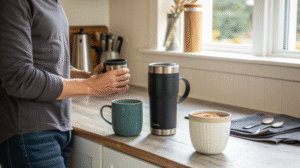Struggling to choose the right bottle for your brand? The options seem endless, making it tough to know which material and design will resonate with your customers and ensure product quality.
Water bottles are defined by their material: stainless steel for insulation, plastic for its lightweight versatility, glass for taste purity, and silicone for collapsibility. Each type serves a different user, from athletes to office workers.
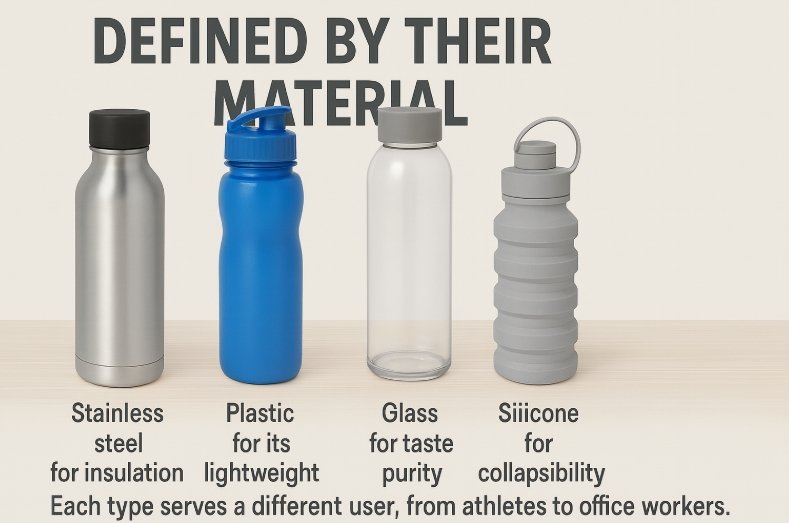
As a drinkware developer, you know the bottle is just as important as the water it holds. For years, I've guided partners like you through this maze of materials, lids, and designs. I've learned that it's not just about containing a liquid; it's about perfectly matching the bottle's function, feel, and style to the user's life. Understanding the core differences is the first step to developing a product that people will not only buy but love to use every day. Let’s break down the options.
How many primary types of water bottles are there?
Feeling overwhelmed by the sheer variety of bottles available? It's tough to categorize them all, making it hard to focus your product development efforts and select the best options for your brand.
There are four main types of reusable water bottles, categorized by their primary material: stainless steel, plastic, glass, and silicone. Each category then branches out into sub-types, like insulated steel or different performance plastics, to meet specific needs.
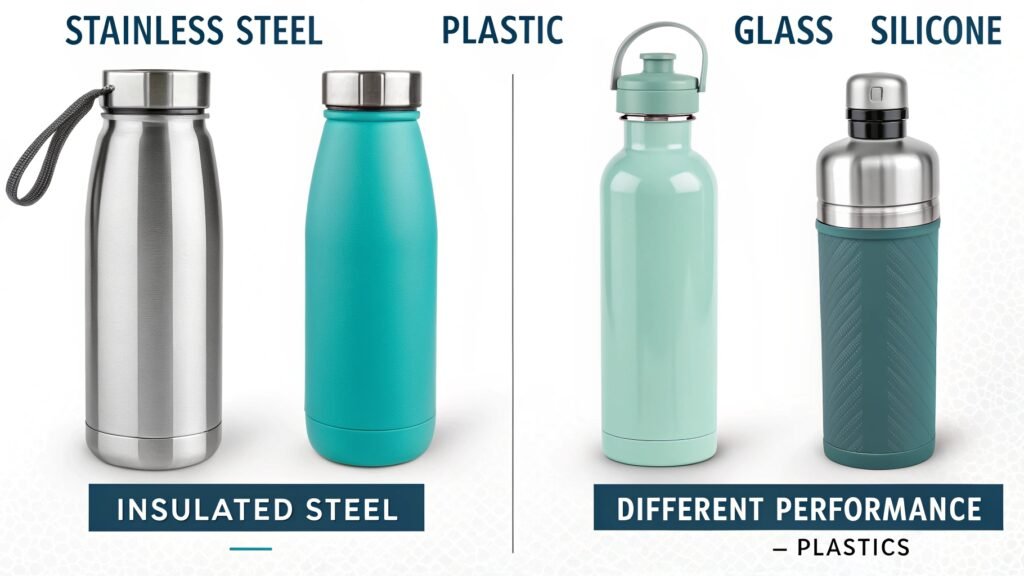
When I first started helping a brand build their drinkware line, they wanted to offer "everything." But this approach spreads resources too thin. I advised them to focus on the core materials first and understand the ideal customer for each one. By focusing on stainless steel for commuters and Tritan plastic for the gym crowd, they created two successful, distinct product lines instead of one confusing collection. Let's look at the strengths of each material.
The Core Materials That Define a Bottle
Choosing a material is the most fundamental decision in water bottle development. It dictates weight, durability, cost, and the overall user experience. Each material has a clear purpose and appeals to a different consumer. As a product developer, knowing these differences is your key to creating a targeted and successful product line.
| Material | Best For | Pros | Cons |
|---|---|---|---|
| Stainless Steel | All-day hydration, hot/cold drinks | Excellent insulation, highly durable, eco-friendly | Heavy, can dent, higher cost |
| Plastic | Sports, kids, everyday portability | Lightweight, durable (Tritan), cost-effective | Insulation is poor, perceived as less premium |
| Glass | Home/office use, taste-sensitive users | Purest taste, looks elegant, easy to clean | Heavy, fragile, no insulation |
| Silicone | Travel, hiking, space-saving | Collapsible, lightweight, unbreakable | Can retain odors, less rigid structure |
Stainless steel, especially 18/8 food-grade, is the king of insulation. The double-wall vacuum construction can keep drinks cold for 24 hours. Modern plastics like BPA-free Tritan offer glass-like clarity and incredible durability without the weight. Glass, especially borosilicate, offers unmatched taste purity but requires care, which is why silicone sleeves are a popular add-on. Finally, silicone bottles are a traveler's dream, folding down to fit in any bag.
What are the four types of bottled water?
Confused by water labels like "spring" and "purified"? Understanding the water source itself helps you align your reusable bottle brand with the right consumer values like purity or performance.
The four main types of water sold in bottles are Spring Water (from a natural spring), Purified Water (processed tap or groundwater), Mineral Water (naturally contains minerals), and Artesian Water (from a confined aquifer). Each has a different branding appeal.
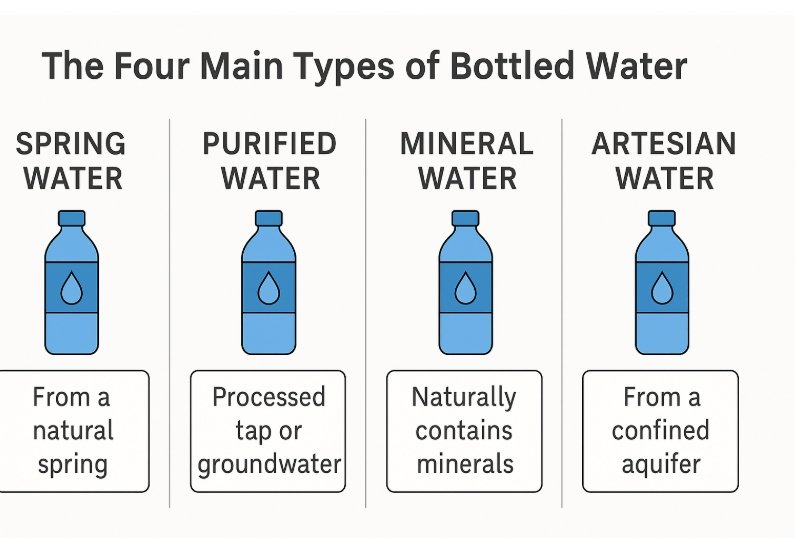
You might wonder why the type of disposable bottled water matters for a reusable bottle brand. It's all about marketing and consumer perception. I worked with a client who wanted to launch a high-end, minimalist glass bottle. We built their entire brand story around the idea of "purity," mirroring the appeal of premium artesian waters. By understanding what consumers look for in water, you can design a reusable bottle that taps into those same desires for health, nature, or performance.
Branding Your Bottle with the Purity of Water
The language used to sell single-use bottled water provides a powerful blueprint for branding reusable bottles. Consumers are already conditioned to associate certain words with quality. By aligning your product's design and message with these concepts, you can connect with your target audience more effectively.
- Spring & Mineral Water: These terms evoke nature, health, and authenticity. Brands targeting outdoor enthusiasts, yoga practitioners, or wellness-focused consumers can use this. A bottle made from clear Tritan or glass, perhaps with earthy color tones, fits this "natural purity" narrative perfectly. The message is about complementing a healthy, natural lifestyle.
- Artesian Water: This suggests something rare, premium, and untouched. It's an angle for high-end, design-focused brands. A sleek stainless steel bottle with a unique finish or a beautifully crafted glass bottle would align with this sense of exclusivity. The focus is on superior quality and refined taste.
- Purified Water: This messaging focuses on science, safety, and reliability. It appeals to consumers who are concerned with contaminants and want guaranteed cleanliness. This is a great angle for family-focused products or CPSC-certified kids' bottles. A bottle with features like a hygienic spout cover or one made from proven-safe materials like PP and Tritan aligns well with the "scientifically clean" message.
By understanding these established water marketing personas, you can position your reusable bottle not just as a container, but as a statement of values that your ideal customer already holds.
What makes a water bottle brand a top seller?
Wondering what separates a bestselling water bottle from all the rest? It is frustrating to see competitors succeed while you're unsure of the magic formula for creating a hit product.
Top-selling brands combine premium materials like insulated steel, a highly ergonomic design, and truly leak-proof cap technology. Most importantly, they build a strong brand identity that connects with a specific lifestyle, transforming the bottle into an accessory.

I've analyzed countless successful drinkware lines, and the pattern is always the same. Success is never just about one feature. It’s about the total package. A brand I know became a market leader not just because their bottles had great insulation, but because they offered an exciting range of colors, a lifetime warranty, and built a massive social media community around outdoor adventures. They weren't just selling a bottle; they were selling membership into a club. Customers weren’t just buying a product; they were buying an identity.
The Anatomy of a Bestselling Water Bottle
Creating a "top 10" product isn't about luck; it's about executing a deliberate strategy. For product developers like Emily, breaking down the success of others provides a clear roadmap. The most successful brands masterfully blend form, function, and feeling.
- 1. Material and Build Quality: This is the foundation. It starts with choosing a premium material, whether it's 18/8 stainless steel for robust insulation or impact-resistant Tritan for clarity and safety. Top brands don't cut corners. Their products feel solid, the finishes are perfect, and they are free from any chemical smells or tastes.
- 2. Ergonomics and Functional Design: A bestseller feels good to use. This includes the shape of the bottle (does it fit in a cup holder?), the texture of the coating (is it easy to grip?), and the width of the mouth (is it easy to clean and add ice?). Every detail of the user interaction is considered.
- 3. Superior Cap Technology: A leaky bottle is a deal-breaker. Top brands invest heavily in designing and testing their caps. The most successful ones often offer a system of interchangeable lids—a straw lid for the car, a chug lid for the gym, and a simple screw-top for travel. This modularity dramatically increases the product's value and versatility.
- 4. Branding and Lifestyle Connection: This is what elevates a bottle from a utility item to a desirable accessory. Top brands use color, branding, and marketing to connect with a specific identity—be it the rugged adventurer, the stylish urbanite, or the eco-conscious minimalist. They sell an experience, and the bottle is the ticket to join.
What do the different types of water bottle caps mean?
Choosing a cap seems like a small detail, but a bad choice leads to leaks, frustration, and unhappy customers. With so many options, it's hard to know which one is right for your product.
Bottle caps are designed for specific uses. A screw-on cap provides maximum security for travel. A straw or flip-top lid allows easy one-handed access for driving or sports, while a wide-mouth chug cap is for fast hydration.
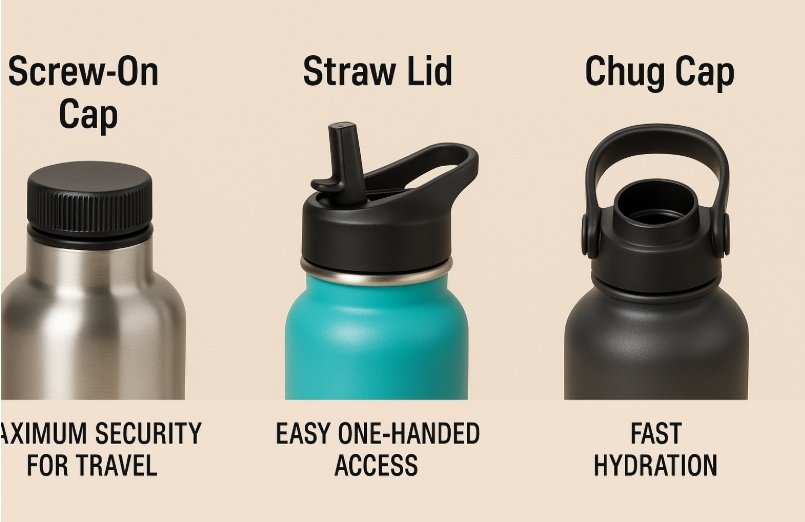
One of the biggest value-adds I recommend to my partners is to develop a system of interchangeable lids for their core bottle design. A customer might need a secure, leak-proof lid for their commute but prefer an easy-access straw lid for their desk. By selling the lids separately, you not only increase the bottle’s functionality for the user but also create an opportunity for add-on sales. The cap isn't an afterthought; it's a key part of the product's feature set.
Matching the Cap to the Customer's Needs
The lid is the primary point of interaction with a water bottle, and its design can make or break the user experience. Offering the right cap for the right activity is crucial. Here’s a simple breakdown to guide your development process.
| Cap Type | Best For | Pros | Cons |
|---|---|---|---|
| Screw-On Lid | Hiking, travel, carrying in a bag | Most secure, simple design, often leak-proof | Requires two hands to open, slower to access water |
| Straw Lid | Driving, office, light gym use | One-handed sipping, no need to tilt bottle | More parts to clean, can leak if not kept upright |
| Chug/Spout Lid | Sports, gym, fast hydration | High flow rate, easy to drink from quickly | Can be easy to spill from, spout must be clean |
| Flip-Top Lid | General daily use, kids, workouts | One-handed operation, keeps spout hygienic | Hinge mechanism can be a potential point of failure |
When developing a new bottle, think about the primary use case. A bottle designed for runners should have a chug or flip-top lid for quick sips. A bottle for a busy professional should have a simple straw lid for mess-free drinking at a desk. The most forward-thinking strategy is to design a bottle with a universal thread that can accept multiple cap types. This allows you to serve many different needs with a single bottle body, giving your customers the power to customize their product.
Conclusion
Choosing the right bottle means matching material, design, and cap to your customer's life. Get these details right, and you'll create a functional, desirable product they'll love to use daily.
